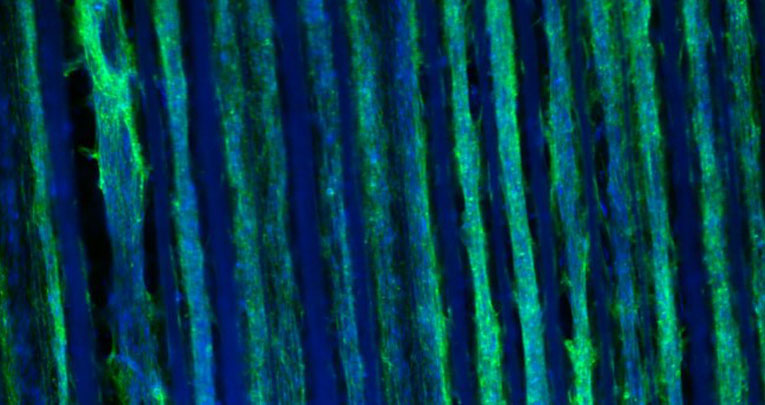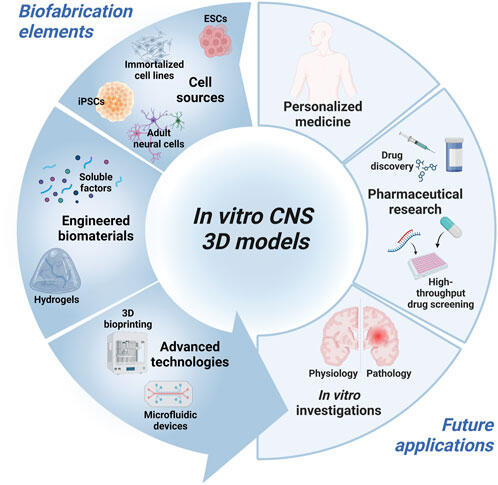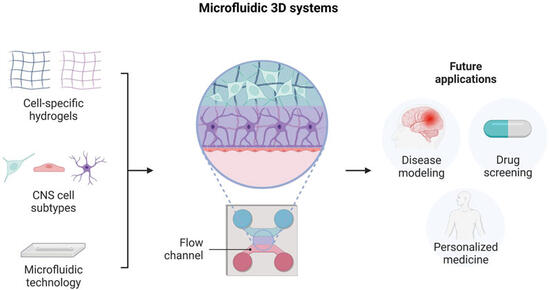
Frontiers in Medical Engineering , 4 October 2023
Advanced materials and biofabrication technologies to design in vitro functional central nervous system models
Traldi C 1,2,3† , Chiappini V 4† , Menduti G 4 , Tonda-Turo C 1,2,3†* , Boido M 4†
Nowadays, the pathophysiology of several central nervous system (CNS) disorders is still poorly understood, making difficult the identification of efficient treatments. CNS damages, due to neurodegenerative conditions or injuries, often result in permanent neuronal dysfunctions and serious impairments of motor, sensory and cognitive capacities. Despite the many attempts of pharmaceutical research to promote neural regeneration, poor progresses have been made in effectively restoring nervous functionality.
Indeed, most of the experimental drugs show limited efficacy in the clinical trials, also due to existing preclinical models’ inability in fully replicating the complexity of CNS pathophysiology. Therefore, tissue-engineered three-dimensional (3D) models are being extensively explored to develop novel representative in vitro platforms, which more carefully replicate the architecture of neural microenvironment, including both cellular and extracellular components.
In this respect, 3D in vitro models are expected to be promising and comprehensive tools for investigating CNS diseases and testing new drug compounds , as they overcome some of the common limitations of traditional two-dimensional (2D) cultures. This review discusses the main challenges to be addressed in CNS modeling, analyzing the key elements involved in neural tissue engineering.
Schematic diagram of the key elements for the design of in vitro 3D CNS models and intended application. Created with BioRender.com
Specifically, an overview of the mostly used neural cell sources and biomaterials is provided, focusing on the critical aspects to consider in selecting the appropriate components according to the application. Different methods adopted to modulate the structural and functional properties of the engineered microenvironment are also presented, aimed at fostering in vitro tissue maturation.
Lastly, the latest advances in biofabrication technologies are outlined, reviewing the most recent 3D bioprinted in vitro systems and microfluidic-based 3D platforms , starting from the modeling of distinctive CNS pathophysiological mechanisms to the designing of refined and functional in vivo -like neural microtissues.
Engineering neural tissue by using microfluidic-based 3D platforms. Illustration of the different system components, design and potential future applications. Created with BioRender.com
1
Department of Mechanical and Aerospace Engineering, Politecnico di Torino, Turin, Italy
2
PolitoBIOMed Lab, Politecnico di Torino, Turin, Italy
3
Interuniversity Center for the Promotion of the 3Rs Principles in Teaching and Research, Turin, Italy
4
Department of Neuroscience “Rita Levi Montalcini”, Neuroscience Institute Cavalieri Ottolenghi, University of Turin, Turin, Italy










